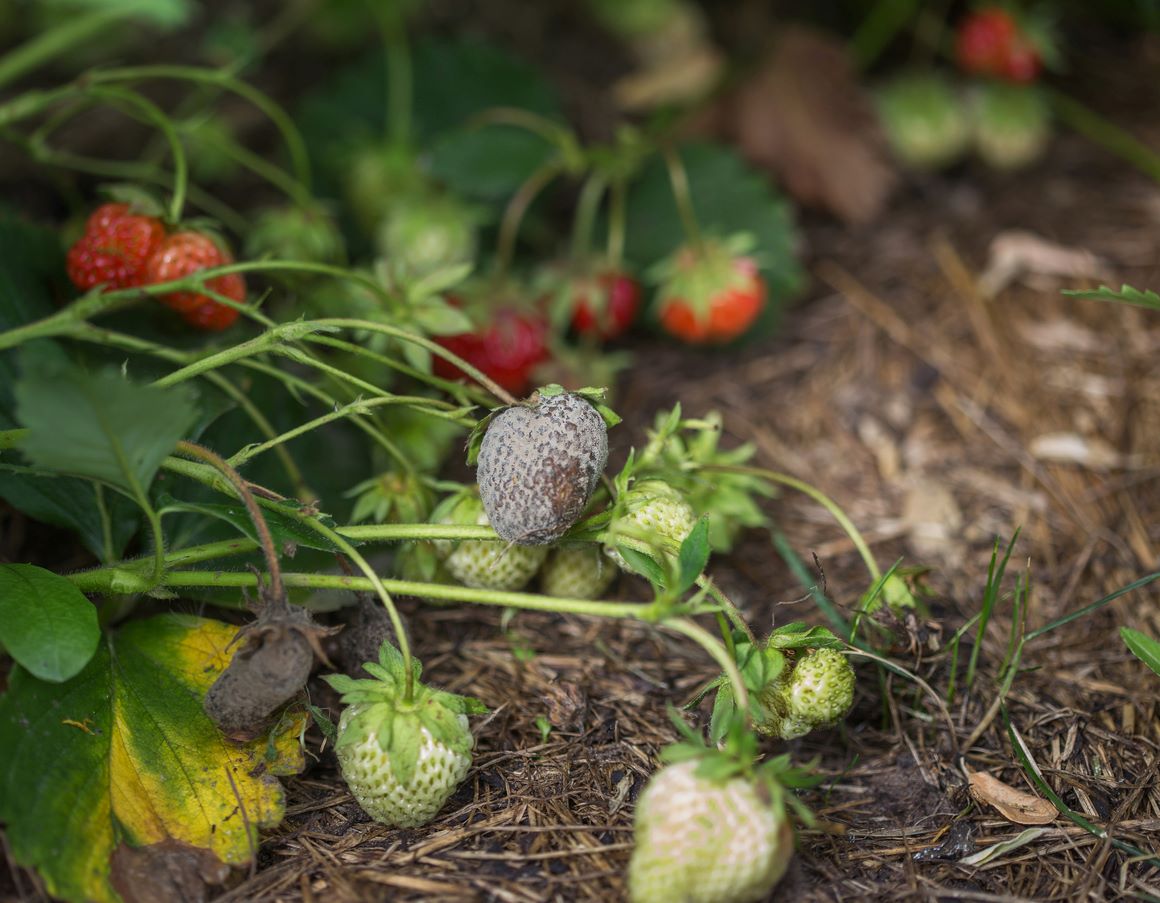
Botrytis lurks for injury
To the great despair of gardeners, it sometimes deviates from its primary mission and linger on living plants. To do this, he must find a way in. It often takes the form of an injury: a point of contact between two fleshy fruits (common on raspberries or strawberries), a damaged leaf after heavy rain, a broken stem, too many and intertwined flowers, etc.
If the weather is too humid, botrytis sets in without further delay. The contaminated tissues sag and dry out then become covered with a characteristic grayish felt which gave the name “gray rot” to this disease. At the slightest contact, the fungus spores disperse in all directions and threaten surrounding plants. The petals of certain large flowers (tulip, cyclamen, etc.) can be covered with numerous small spots: this is “spotting”, another harm caused by botrytis.
Against this fungus: act quickly!
Some plants are more vulnerable than others:
- Madagascar periwinkle,
- petunia,
- begonia,
- the dahlia,
- geranium,
- Strawberry plant,
- the salad,
- squash,
- etc.
If your garden is shady and humid, you may have to resolve to abandon some of these crops. In a slightly too dense bed or a humid greenhouse, gray rot can progress very quickly and your action must be immediate.
Ventilate the greenhouse, remove excess plants and move the pots away from each other. Eliminate all diseased parts: flower, fruit, leaf or stem. Seriously limit watering, which you will preferably carry out in the morning. No need to use treatments. None – not even Bordeaux mixture – can stop the mad rush of this fungus!
Botrytis: rotten… but noble!
This fungus, which threatens on one side, is very useful on the other. Botrytis is sought for the production of certain sweet wines. At the end of summer, when the humidity conditions are right, it colonizes the grape grains and thus increases their sugar concentration. He also participates in the development of new aromas for wine which takes on a typical “botrytized” nose, for example Sauternes.
How to prevent botrytis?
To prevent botrytis from taking hold on your plants, you must adopt a few preventive measures:
- Choose varieties resistant to botrytis, such as ‘Mara des bois’ strawberries, ‘Coeur de Boeuf’ tomatoes or ‘Pierre de Ronsard’ roses.
- Respect planting distances and the water and fertilizer needs of each plant. An excess of nitrogen promotes the development of botrytis.
- Regularly prune dead or diseased parts of your plants, and collect the leaves and fruits that have fallen to the ground. Burn or throw away contaminated waste.
- Ventilate your crops well, especially in a greenhouse or indoors, and avoid sprinkler watering which wets the foliage. Prefer watering by foot or drip irrigation.
- Strengthen natural defenses of your plants by providing them with nettle manure, horsetail decoction or baking soda diluted in water.
How to treat botrytis?
If, despite these precautions, botrytis appears on your plants, you must act quickly to limit the damage. Here are some natural solutions to fight against this fungus:
- Spray white vinegar diluted to 10% on the affected parts. Vinegar has a fungicidal and disinfectant effect.
- Sprinkle with cinnamon powder on waist sores or wounds. Cinnamon has antiseptic and healing properties.
- Apply green clay on affected fruits or flowers. The clay forms a protective barrier and dries out the botrytis.
- Use products based on sulfur, copper or Thuringian bacillus, available in garden centers. These products are effective against botrytis, but they can be toxic to the environment and beneficial organisms. Respect the doses and precautions for use indicated on the packaging.
Conclusion
Botrytis is a formidable fungus that can cause serious damage to your plants. We must therefore be vigilant and intervene quickly in case of attack. Fortunately, there are ways to prevent and treat botrytis without resorting to chemicals. By following our advice, you will be able to protect your plants and enjoy your garden. Good luck !

